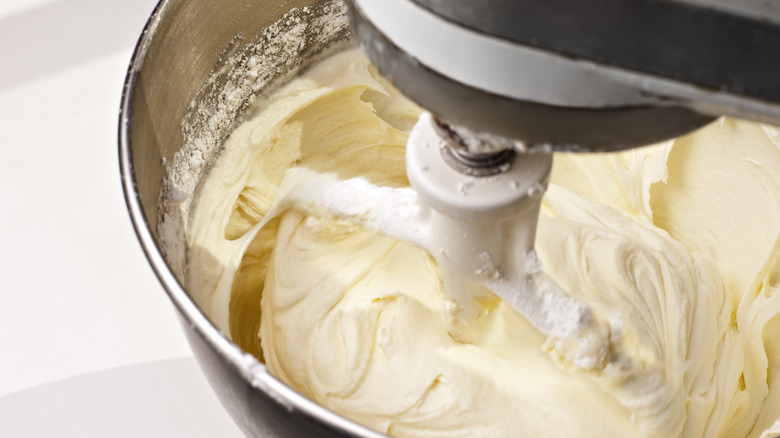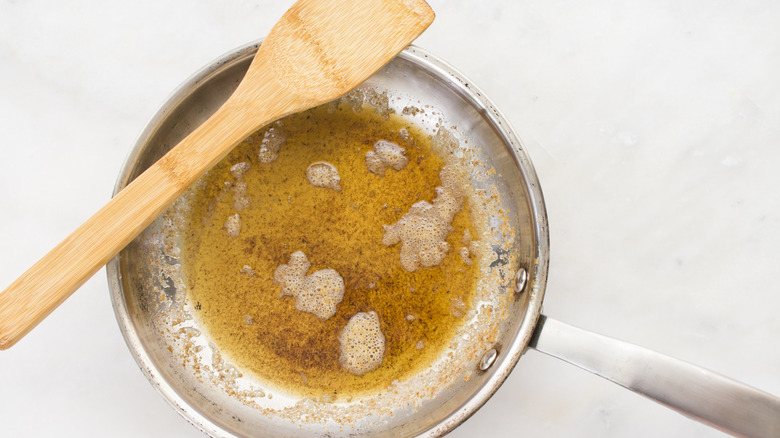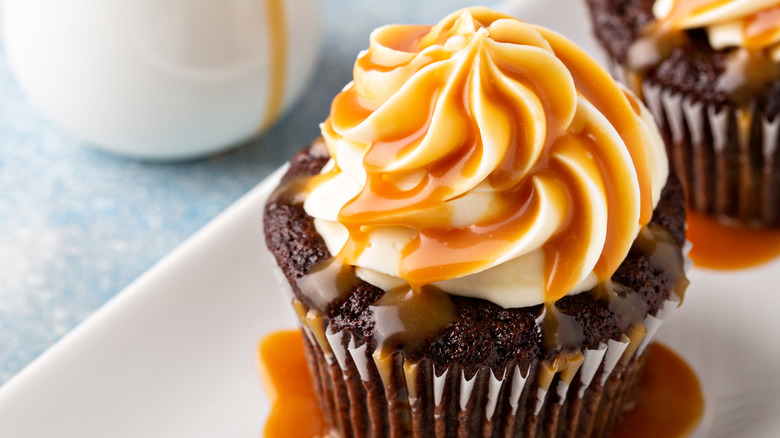Brown Your Butter For A Truly Elevated Cake Frosting
Cake is the ultimate special occasion treat, but you don't have to wait for a birthday to enjoy a slice. One of the biggest reasons we don't eat cake all the time, besides all the sugar, is the misconception that it takes a lot of work to bake a cake. There are many easy cake recipes out there, and there are even ways to upgrade boxed cake mixes to make them taste homemade. One of the easiest ways to elevate any cake is to mix or make the frosting with brown butter. The nutty, satisfying taste of brown butter gives the sticky, sweet spread a salty, savory dimension so irresistible that you might want to eat all the frosting with a spoon before it even gets on the cake.
Whether your frosting is made mostly with butter (such as buttercream, which has butter right in the name) or other ingredients like cream cheese or heavy cream, brown butter will mix in seamlessly. Plus, you don't need a lot of brown butter to get the toasty flavor because just a few tablespoons can flavor a whole batch of frosting.
Brown butter makes frosting a little savory
If you're not already hip to brown butter, it's butter that's been melted and cooked on the stove until the solids have browned. If you do it right, it should taste like toffee and toast, with just a hint of an almost burnt crème brûlée character. When you make brown butter for the first time, it feels a little bit like you're making a huge mistake because you nearly burn the butter. However, the result is surprisingly versatile, and you can use it on everything from steaks to sweets.
When it comes to frosting, browned butter pulls off the neat trick of making a typically sweet element into something a little more complex that our taste buds can't get enough of. Some of the most memorable flavors are a combination of contrasting tastes, like kettle corn, which is salty and sweet, and who can resist classic hot and sour soup? When brown butter is mixed into frosting, you get an irresistible combination of sweet and savory.
If you want to add brown butter to prepared frosting, all you need to do is brown two or three tablespoons of butter on the stove and let it cool to room temperature. Once it's cool to the touch, simply whip it into your batch of frosting.
Test your frosting first
Almost any frosting recipe can be made better with a little brown butter. However, if you're not sure how the frosting is going to react, you should proceed with caution. Many buttercream recipes are made with room-temperature butter, so adding brown butter might cause them to break. If you're not sure how your frosting will react, do a test with a couple of tablespoons of frosting first. Separate a small portion of frosting in a second bowl, add a tablespoon of brown butter, and mix everything. If the test batch of frosting doesn't break or look greasy, you can go ahead and scale up the rest of your big batch of frosting. If it does break or look weird, try mixing in a little bit of powdered sugar, which contains cornstarch, and that may bring the frosting back together.
Most frosting recipes that are made with lots of powdered sugar and thinned with milk or cream are pretty resilient and can handle one or two tablespoons of brown butter. Cream cheese frosting is especially adept at handling a little more fat, and brown butter balances out its tangy, fatty flavor. Whatever frosting you decide to doctor up, once you've got your brown butter frosting game down, you'll be making cakes a lot more often.


